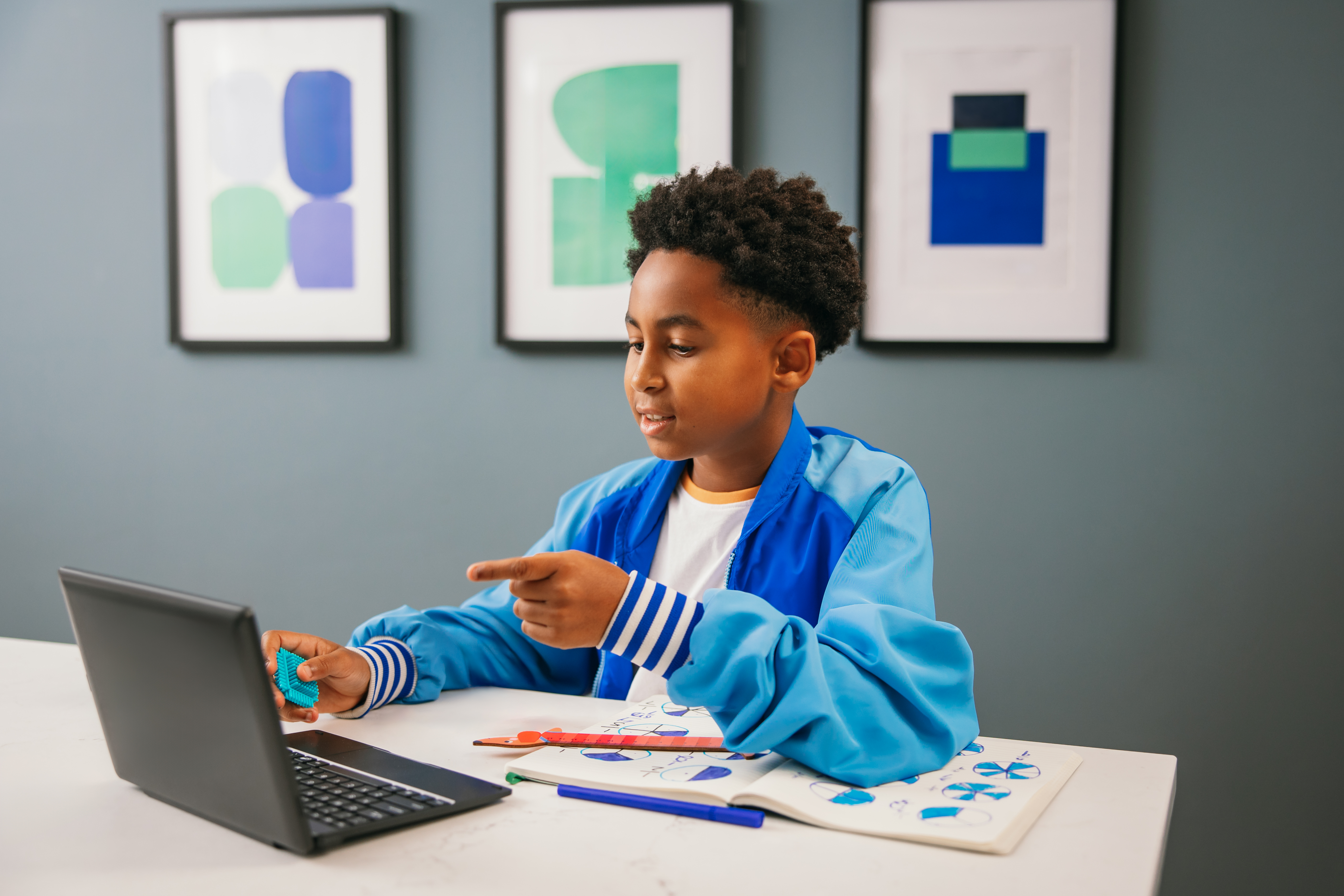The landscape of Special Educational Needs and Disabilities (SEND) in the UK is vast and intricate. It involves diverse needs, evolving policies and ongoing challenges. For many parents and caregivers, it can be difficult to understand what’s available or know how to navigate the current system - and if you read the news it can bring little in the way of hope.
Here at GoStudent, we don’t want to whitewash the reality of the current SEND-related difficulties facing many families, caregivers and educators. We would, however, like to highlight some key points, based on expert insight, and offer real advice and solutions for those taking steps to address their child’s SEND needs.📢
As part of our deep dive into the current SEND landscape, we spoke to two experts, Matthew Selsdon and Dr Helen Ross. Matthew is Deputy Head of a special needs school in Oxfordshire and Dr Helen Ross is a Dyslexia and SEND Consultant and Specialist Assessor.👩🏼🏫🧑🏼🏫
What is SEND/SEN?
We use the terms SEND (and also SEN) to talk about learning difficulties or disabilities that make it harder for children and young people to learn. SEND encompasses a wide spectrum of learning differences, including dyslexia, dysgraphia, dyscalculia, ADHD to autism spectrum disorder as well as physical disabilities.
These differences can lead to a range of needs relating to:
- communication and interaction
- social, emotional or mental health
- cognition and learning
- (neuro)developmental, sensory and/or physical disabilities.
It’s crucial to remember that no two SEND children’s needs or learning journeys are identical. Each child has different strengths and requirements, and these take time to fully evaluate and understand.🔬
The Special Educational Needs and Disability Regulations 2014 laid down clear guidance for those working with children and young people with special educational needs. The regulations, which were part of the Children and Families Act 2014, aim to ensure that children and young people and their families:
- Get the support they need to enable them to learn
- Are involved in decision-making about the support they need
- Have easy access to information
- Receive support that will help them prepare for their future
What is the learning landscape like in the UK for SEND children?
It’s important to remember that SEND provision will vary greatly depending on where you are in the UK: a large inner-city school will have different resources compared with a smaller school in a rural setting; a school in an older building will have different accessibility constraints compared to one with a more modern campus; funding, staffing and training levels vary dramatically from one school to another. All this goes to show that, when assessing something as complex as SEND provision for an individual child, there are intricacies related to the educational setting that they have access to which may shape the way in which their care is provided.
Increased demand for SEND provision
More than 1.5 million students in England have special educational needs. In order to access extra support via their local authority, children need an Education, Health and Care plan, often known as an EHC plan or EHCP. This is a legal document, issued after an EHC needs assessment, which describes a child or young person’s (up to age 25) special educational needs. It also outlines the support they need as well as their desired outcomes. An EHC plan can give parents and young people greater choice regarding which educational setting is best for them to attend.🏫
According to government figures, 4.3% of pupils in England have an EHC plan and an additional 13% receive SEN support without an EHC plan - and both of these figures continue to grow. With population increases and greater awareness of SEND needs, demand for SEND services often outstrips availability. Among children with an EHC plan, the most common type of need being addressed is autism spectrum disorder. The most common type of support delivered to SEND students relates to speech, language and communication needs.
It’s no secret that many local authorities are struggling to meet those needs, with backlogs regarding EHC plans and SEND provision making the headlines on a regular basis, but this increased demand is also indicative of increased awareness.
Matthew Selsdon, who is the deputy head of a special needs school in Oxfordshire, said:
“The number of consultations for special schools has increased quite significantly over the last few years. This coincides with the number of children in mainstream schools that require specialist provision, resourcing or staffing. Therefore, the number of children that would really benefit from SEND provision has increased quite significantly. There appears to be more awareness of SEND needs and, as such, ensuring that the correct support is in place appears to be identified quicker.”
What’s working well?
Technology
One thing that appears to have a consistently positive impact on SEND provision is technology. According to The Pearson School Report 2023, “1 in 3 teachers say that in the last two years, new technologies have aided student engagement and improved accessibility for learners with SEND”. Communication devices such as tablets can help students communicate effectively and move with them throughout the day, and there’s a vast array of apps for children with learning disabilities. In the classroom, devices such as interactive whiteboards offer an engaging tool for the student to engage with, enabling them to be part of their class community. 🤲🏾
Matthew Selsdon said:
“Technology is used in a variety of different ways, and I think the most important one, where it's appropriate, is in the form of communication - ensuring that students have a communication resource that's relevant for them. In some cases, this may be in the form of a portable device, therefore technology can be embedded to support who they are as individuals, educationally, and help with preparation for adulthood, so it’s quite far-reaching. ”
Technology can also make the written word more accessible to learners, by reading texts aloud or transcribing - even the act of typing can help bypass some of the physiological barriers encountered by SEND students. The software used doesn’t always have to be specialised, with readily available tools such as Windows accessibility features coming at no extra cost.🖥️
Dr Helen Ross said:
“Technology takes the burden off your working memory, which is one of the key things around specific learning difficulties. If your working memory is full then things like letter formation and writing can then be really difficult. With tech, you can cut and paste, you can rearrange things really simply. It just makes it so much easier, whereas if you've got to hold everything in your head it’s much harder.”
Toolkits
In response to increased awareness and a demand for support, there are a range of resource toolkits readily available online. Many organisations such as councils offer online toolkits with information, guidance, tools and strategies for supporting children with SEND.
In addition to tablets and readers, product provider Scanning Pens has developed a physical resource called the Literacy Toolbox to normalise the use of tools to support reading and learning within the classroom. The toolbox contains items to help both SEND pupils and non-SEND pupils with motor skills, speech and language, concentration, visual support and comprehension and can be built by the teacher based on what they have access to. Studies have shown that this approach has shown strong input and positive outcomes.🧰🛠️ Sense Toys also offers a range of physical objects to help SEND children with specific needs, from ear defenders to safe oral chews.
Training
Specialist organisations such as The British Dyslexia Association, The National Autistic Society, The ADHD Foundation, Tourettes Action, Dyspraxia UK and The Dyscalculia Association are able to offer expert-led training to help support people working with SEND students.
Specialist settings also understand the importance of continuing professional development. Matthew Selsdon said:
“As with any school, any SEN School, any mainstream school - we always need to ensure that all staff are supported with CPD [Continuing Professional Development]. We continue to upskill our staff to be able to ensure that they have the most relevant and up-to-date information to be able to support our children in the most effective way. We recently delivered 12 hours of training on a particular area, because we wanted to have those discussions and dialogues at the forefront of staff minds to ensure that we're always able to support our children in the best way.”
What does the future of education hold for SEND children?
Again, developments and directives are location-specific and there are large differences in policy across the four home nations of the UK.🗺️
Changes in assessment
Exam boards are starting to branch out towards digital assessment for all students. The exam board AQA has plans for one major subject to be assessed digitally by 2030 and all Pearson Edexcel GCSEs will have an onscreen option by 2030. They have recognised that digital exams offer greater inclusivity and better preparation for future education and work. A shift to digital assessment will level the playing field for many students, with SEND or not, who find manual writing challenging.
Sharon Hague, Managing Director for Pearson Schools said: “Onscreen is a better experience for students who need accessibility adjustments. Students can zoom in to increase font size and choose colour filters onscreen during exams, something their schools or college would otherwise need to request in advance of their exams.”
Steve Rollett, Deputy Chief Executive at the Confederation of School Trusts, said “We welcome initiatives designed to increase accessibility and equity. Onscreen assessment appears to have the potential to support students, especially those with particular needs, who might struggle to access traditional paper exams.”
Further embracing technology
Love it or loathe it, online learning has become part of our world, and digital skills among both teachers and students increased dramatically during the pandemic. Thankfully, technology is something that both students and leaders are keen to embrace. According to the Department for Education’s 2022-23 Technology in Schools Survey, investing in technology to support SEND students is among the top 3 areas for investment for leaders.👩🏾💻
According to the GoStudent Future of Education Report 2023, 81% of UK students think that technology makes learning easier for them. With the advent of assistive technology and AI, there are endless possibilities for personalised learning which could enhance the current SEND provision and make education more inclusive. The Future of Education Report 2024 builds on this, with students in the UK seeing technology development (such as AI, VR, AR) as the #1 skill they need to future-ready. According to the World Economic Forum's 2023 study about the Future of Jobs, AI and big data is the number one skills priority for large companies.
How can we support SEND children?
If you’re a parent of a student awaiting a SEND diagnosis or EHC plan, you may be asking yourself ‘what can I do?’ Here’s what our experts advise.
Prioritise communication💬
Matthew Selsdon advises putting communication front-and-centre. He said:
“I think for any child with SEN, communication is really key in every aspect of support. When having conversations with other professionals about support for a student, the first thing we always talk about is that need for communication. We have to understand and facilitate ways to communicate in the most effective way for them - and actually, if you can ensure that that's in place, everything else slots together more successfully for the student.”
Don’t succumb to social pressure 💪
Dr Helen Ross stresses the importance of maintaining an unpressurised approach to learning. She said: “Give your kids time and don’t put extra pressure on them. It’s so easy to go “Oh my kid can’t read, he’s got to have tutoring two or three times a week”. I would say do things with a light touch. If a kid’s reading a cereal packet or a chocolate bar wrapper, they’re reading. That’s really important. I think there’s a snobbery around the concept of being well-read, and there is a snobbery around the idea that you must love reading”
She also advises letting children read using screens if they prefer and recommends using low-stakes mediums for writing such as erasable whiteboards or magnetic tablets.
Get to know your child and access support accordingly🦄
There’s a wealth of information available about SEND but Matthew Selsdon also encourages parents to remember that their child is unique. He said:
“It's always about understanding the child and what they need. So there's a balance between understanding a diagnosis that you might have and understanding your child and how those two work together.”
While learners with the same condition may have similar traits, as characters, they may be completely different and it’s important to identify what you need support with as a family, whether it’s understanding a diagnosis or finding out more effective ways to communicate.
Blended and Hybrid Learning
While technology cannot replace teachers, 62% of parents and half of teachers think hybrid and blended learning techniques could be a practical solution to the shortage of teachers in Europe, with a study showing that 35 countries across Europe suffer from a shortage of teachers. Europe is still slow to adopt blended and hybrid learning in classrooms. Only 6 in 10 children are currently taught using these techniques, with the technology gap, stretched resources, and a lack of staff training to blame.
This may be having an outsized impact on children who have been diagnosed with (23%) - or have shown signs of (26%) - special educational needs. This group may not typically receive the attention they need in a crowded classroom, and a hybrid or blended learning model would enable them to find an approach that enables them to keep pace with their peers.
It’s not only the technology gap that is preventing more widespread adoption of these techniques. Some teachers are also reluctant to digitalise their teaching environment too much, as they are passionate about maintaining a human connection with their students.
However, with almost 8 in 10 children saying they like to learn through blended techniques and 7 in 10 enjoying hybrid learning, a slow adoption rate from schools risks leaving children disengaged from their education, and ill-prepared for the hybrid future of work.
How can tutoring help?
Despite being a tutoring company, at GoStudent we understand that tutoring is personal - every student needs a personalised approach to succeed, whether it’s in person or online.
That said, tutoring can be of great benefit to SEND students - but it’s important to use it appropriately.
Adding an hour of tutoring onto a young child’s 6-hour school day may not be the best approach, whereas finding a way to integrate tuition into the school day can work well.⏰
Dr Helen Ross supports a ‘little and often’ approach to tutoring. She said “I think online tutoring can be brilliant because you don’t have travel time and it means that a kid can be in a setting that’s comfortable. [...] It doesn’t need to then take any resources from the school, they can just log on to a device if there is one, go in a corner and get on with it.”
The GoStudent Future of Education Report 2023 stated that 34% of UK children find it difficult to focus in the classroom. For many, tutoring can help maintain focus and enable them to achieve the attention they need. 🌠 Using a variety of methods to help aid learning can go a long way to keeping focus, including personalised learning plans. Our Future of Education report from this year supports this, with 84% of UK parents believing personalised learning plans are essential for academic success.
Dr Helen Ross said:
“Having a tutor means there’s someone who can make things personal for that particular child, which is really important. Tutoring can be brilliant, you can find where the wobbles and weaknesses are, you can do pre-teaching, post-teaching and really hit where a child needs it.”
Read more of our new Education report here.
At GoStudent we have a range of expert tutors, allowing students to benefit from 1:1 learning with an education professional who understands their needs. Our tutors use a digital classroom, online apps, and gamification to keep learners engaged. Book your free trial lesson today!🔑









